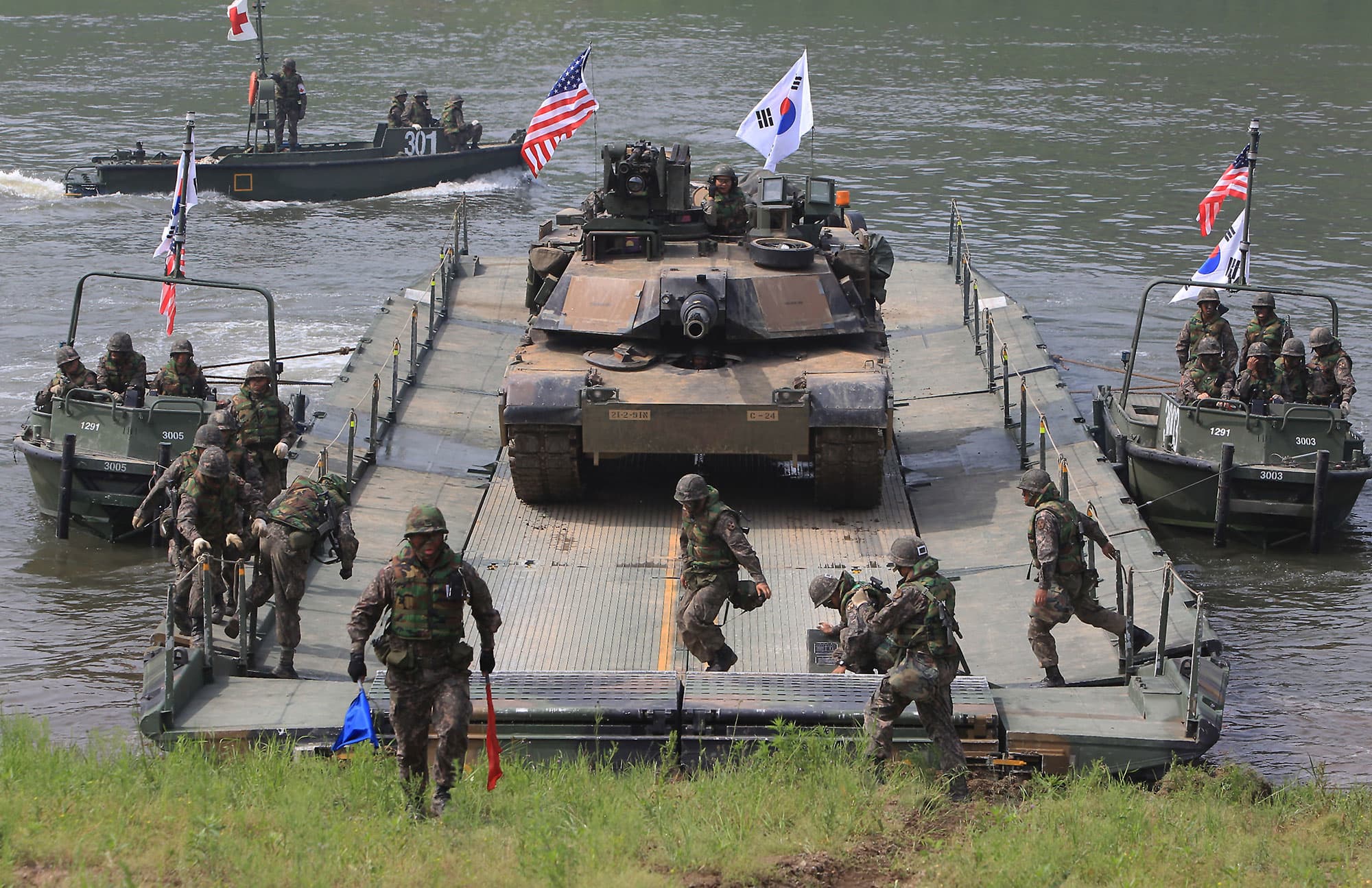
Sharing the costs of hosting U.S. troops in allied countries has been a favorite topic of U.S. President Donald Trump since his first term in the White House.
But as more countries try to eke out a deal to escape the spectre of tariffs in his second term, Trump is making his own moves: bundling negotiations on trade, tariffs, and defense cost-sharing into a single comprehensive deal, which he called “one-stop shopping.”
One such country in his sights is South Korea, which is home to about 28,500 U.S. troops known as U.S. Forces Korea. On April 8, Trump wrote on Truth Social that he had discussed “payment for the big time Military Protection we provide to South Korea,” among other issues, with then-acting president Han Duck-soo.
“We are bringing up other subjects that are not covered by Trade and Tariffs, and getting them negotiated also. “ONE STOP SHOPPING” is a beautiful and efficient process!!!” Trump wrote.
While South Korean officials have reportedly said that defense payments are off the table, the country’s two leading presidential candidates, Lee Jae-myung and Kim Moon-soo, have hinted that they are open to discussing a defense cost-sharing agreement.
However, analysts told CNBC that a transactional approach wouldn’t necessarily work in the U.S.’s favor.
Paying dues
At the Munich Security Conference in February, then-Singapore Defence Minister Ng Eng Hen said, “It has been said that trade and security are two sides of the same coin, and one assumes that as trade dependencies shift, security alliances will follow.”
But, the image of the U.S. in Asia, Ng said, “has changed from liberator to great disruptor to a landlord seeking rent.”
The U.S. president is likely to bring defense payments up in trade talks, Bruce Bennett, Professor of Policy Analysis at the RAND School of Public Policy, told CNBC.
“It’s the way he does business,” Bennett said. “So it’s not like he definitely wants to bring troops home, but it is a matter that he wants the recognition and the acceptance of responsibility from our allies,” he added.
This was the stance espoused by U.S. Under Secretary of Defense Elbridge Colby, who said in a 2024 interview that U.S. Forces Korea should be overhauled to be “more relevant” to handling China, as opposed to North Korea.
One way South Korea could “pay more” is by investing in its forces and buying more U.S. military equipment, Bennett said.
This will enable the South Korean military to plug any capability gaps while allowing U.S. Forces Korea to focus more on China, he added.
“[If] the Korean government says we’re volunteering to …raise our budget by $3 or $4 billion, we’re going to use it to buy equipment so that the U.S. can have a shift in focus, I think that would go a long way to meeting the President’s interests.”
South Korea spent 2.6% of its GDP on defense in 2024, more than the global average of 2.5%, and one of the highest in the world, according to the Stockholm International Peace Research Institute.
In 2025, the country allocated 61.25 trillion South Korean won ($43.83 billion) for defense, or a 3.1% increase from the year before.
However, such a transactional approach will damage U.S. credibility, Hoshik Nam, assistant professor at the Department of Sociology and Political Science at Jacksonville State University, said.
Using the deployment of U.S. forces as leverage in trade negotiations could lead close allies to perceive U.S. commitments as less credible, Nam added.
“In the long term, this position could reframe the U.S. as an isolated superpower.”
How the burden sharing has evolved
South Korea wasn’t required to make any financial contribution in its original 1966 agreement with the U.S on troops stationed in the country, known as the Status of Forces Agreement.
Cost sharing only became a feature of the alliance in 1991, when Seoul agreed to share some of the burden of stationing U.S. troops in three areas, namely logistics, local labor, and military construction.
Nam explained that South Korea’s rapid economic growth from the 1960s created the conditions for cost-sharing.
“Both countries also agreed that their relationship should move beyond a simple aid-provider and recipient dynamic,” he noted.
The funds provided by the South Korean government also created local jobs and helped local industries, Nam said.
“Regarding construction, most projects are carried out by Korean construction companies. In terms of logistics, the equipment, services, and facilities are all supplied by Korean companies,” Nam highlighted.
In October 2024, Seoul agreed to raise its contribution for hosting U.S. troops by 8.3% in 2026, to 1.52 trillion won ($1.13 billion).
However, Trump’s ‘one stop shopping’ stance to bundle trade with defense agreements could throw the latest cost-sharing agreement by the Biden administration into jeopardy, given that the 2024 agreement covers the period of 2026-2030.
Source: CNBC
